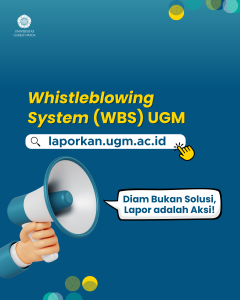As part of its efforts to enhance educational accessibility and promote affordable access to resources, the Faculty of Dentistry (FKG) Universitas Gadjah Mada (UGM) has introduced a new library attendance system. This initiative aims to simplify the check-in and check-out process at the library, ensuring that students can easily access the materials they need for their studies.
To use the new attendance system, students must first open the SIMASTER UGM application. Designed to facilitate various academic activities, this app includes features for library attendance tracking. Students must log in using their UGM Single Sign-On (SSO) account, ensuring a secure and personalized experience.
Once logged in, students can access their profile from the main menu of SIMASTER UGM. At the bottom of the menu, they will find a fingerprint-shaped icon, which is crucial for accessing the library attendance feature. By tapping this icon, students can proceed to the next step of the check-in process.
After selecting the fingerprint icon, students will see an option labeled "Checkpoint", specifically designed for library attendance. This feature streamlines attendance tracking and helps maintain an organized library environment.
Students can choose between two methods for check-in with QR Code or Manual Code Entry. Both options are available near the entrance of the FKG UGM Library and at the front desk, ensuring easy access for all students.
The introduction of this attendance system aligns with the Sustainable Development Goals (SDGs), particularly Goal 4: Quality Education. By simplifying the attendance process, FKG UGM enables students to make the most of library resources, which are essential for academic success.
Moreover, ensuring affordable access to educational resources is a key focus of this initiative. By leveraging technology, the library reduces potential barriers that may have previously hindered students from fully engaging with available materials. This is especially relevant as digital resources become increasingly integral to learning.
Additionally, the system allows library staff to monitor library usage patterns. By analyzing when and how students use the library, staff can make informed decisions regarding resource allocation and service improvements. This data-driven approach ensures that the library continues to meet the evolving needs of its users. By participating in this initiative, students not only enhance their educational experience but also contribute to a larger movement toward improving educational accessibility for all.
Authors: Desy Natalia Anggorowati, Angela Niwan Vidias Ratri, Al Haqi Insan Pratama



